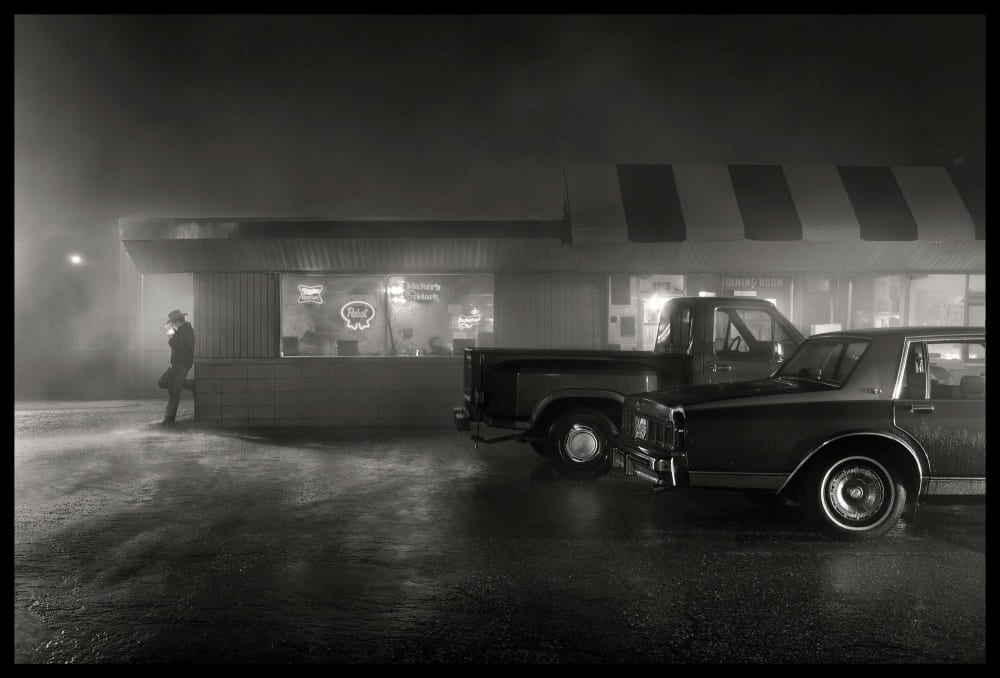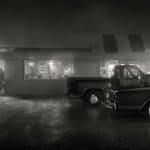Dean West Australian, b. 1983
Lucky Enough, 2024
Series: American West
Archival pigment print
147.3 x 220.2 cm
58 x 86 3/4 in
58 x 86 3/4 in
Edition of 3 plus 2 artist's proofs
121.9 x 182.1 cm
48 x 71 3/4 in
48 x 71 3/4 in
Edition of 6 plus 3 artist's proofs
96.5 x 144.3 cm
38 x 56 3/4 in
38 x 56 3/4 in
Edition of 9 plus 3 artist's proofs
61 x 91.2 cm
24 x 35 7/8 in
24 x 35 7/8 in
Edition of 25 plus 2 artist's proofs
Further images
In West's black-and-white oeuvre, minimalism becomes more than just an aesthetic—it’s a precise act of visual distillation. He strips away the extraneous, reducing each image to its core with a...
In West's black-and-white oeuvre, minimalism becomes more than just an aesthetic—it’s a precise act of visual distillation. He strips away the extraneous, reducing each image to its core with a masterful use of contrast, cinematic lighting, and carefully restrained composition. He pares everything down to the bone and what remains is the pure emotional and thematic essence of the photograph. What’s hidden in the dark becomes more interesting. It’s all tension, mystery, and that uneasy feeling you can’t shake. That’s what West is playing with. He’s not just showing you something pretty. He’s making you feel something. And not in some gentle, hand-holding way either.
This reductive approach harks back to the Film Noir genre, where shadow and light do the heavy lifting, adding a sense of tension, mystery, and delicious moral ambiguity. In West's hands, light and shadow become the protagonists, creating depth and dimension while deliberately obscuring certain elements of the frame. The result? A visual language that speaks in whispers, evoking the same intrigue and unease that made classic Film Noir so captivating.
But it’s more than a visual homage—there’s something deeply psychological happening here. By reducing the visual field, West invites us into the inner lives of his subjects, just as Film Noir peeled back the layers of characters grappling with their own moral conflicts. The sparseness sharpens the focus. It’s in the things left unsaid, the areas unlit, that the real story unfolds-lingering in the shadows.
This reductive approach harks back to the Film Noir genre, where shadow and light do the heavy lifting, adding a sense of tension, mystery, and delicious moral ambiguity. In West's hands, light and shadow become the protagonists, creating depth and dimension while deliberately obscuring certain elements of the frame. The result? A visual language that speaks in whispers, evoking the same intrigue and unease that made classic Film Noir so captivating.
But it’s more than a visual homage—there’s something deeply psychological happening here. By reducing the visual field, West invites us into the inner lives of his subjects, just as Film Noir peeled back the layers of characters grappling with their own moral conflicts. The sparseness sharpens the focus. It’s in the things left unsaid, the areas unlit, that the real story unfolds-lingering in the shadows.













